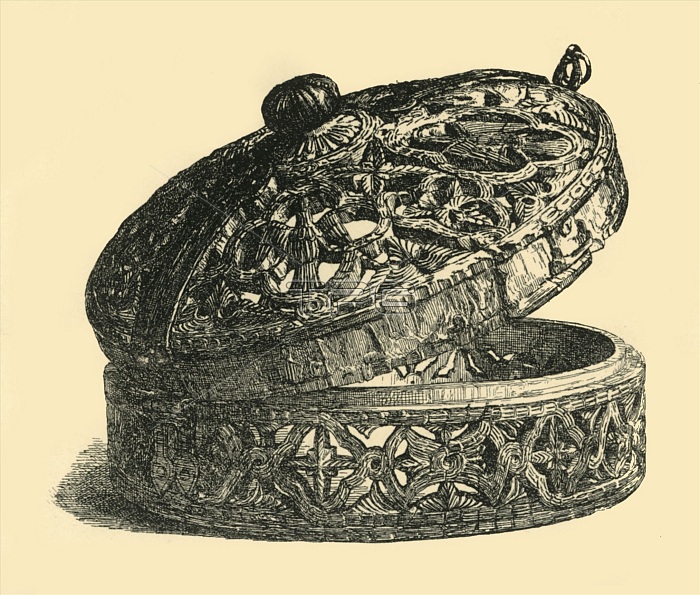
Pyxis, c964 AD, (1881). Etching of a small cylindrical ivory box made in the mid 10th century, at Medina Azahara, Cordoba, Spain. The carved openwork decoration of the box, which was presumably designed to hold perfumed substances, would have allowed the scent to waft through the holes. According to the inscription round the lid, the pyxis was made at the command of al-Hakam II (915-976), the second Umayyad Caliph of Al-Andalus, probably as a gift for his favourite wife, Subh, to celebrate the birth of their son in the previous year. From "The South Kensington Museum", a book of engraved illustrations, with descriptions, of the works of art in the collection of the Victoria & Albert Museum in London (formerly known as the South Kensington Museum). [Sampson Low, Marston, Searle and Rivington, London, 1881]
| px | px | dpi | = | cm | x | cm | = | MB |
Details
Creative#:
TOP25072251
Source:
達志影像
Authorization Type:
RM
Release Information:
須由TPG 完整授權
Model Release:
No
Property Release:
No
Right to Privacy:
No
Same folder images:

 Loading
Loading